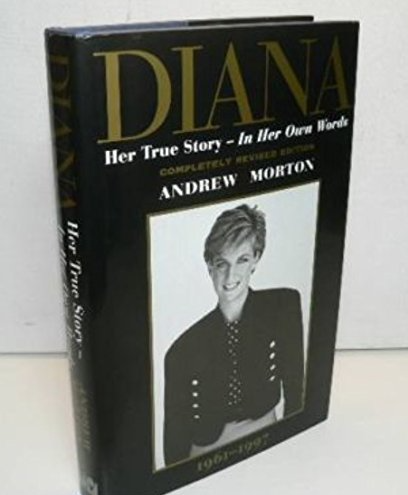Lady Diana Spencer lived an extraordinary yet tragically short life. She was born Diana Frances Spencer on 1 July 1961 into British nobility, growing up privileged on the grand Sandringham estate. Though shy, she was thrust into the global spotlight when her engagement to Prince Charles was announced in February 1981, having met just months earlier. Their spectacular royal wedding on 29 July 1981, enchanted the world, as over 750 million people tuned in on television.
Diana also embraced motherhood after marrying Prince Charles and taking on royal duties. She gave birth to Prince William in 1982 and Prince Harry in 1984. However, there was trouble behind the scenes. Diana and Charles' incompatibility led them to formally separate in 1992, which the Prime Minister announced that December. Their divorce was finalized in 1996, but Diana remained beloved by the public and devoted to humanitarian causes. Fatefully, she died at the age of 36 after a car crash in Paris on the last day of August in 1997. Her sudden death sparked an unprecedented outpouring of grief and affection for the "People's Princess" all over the globe. Even decades later, Diana's grace, compassion and activism still inspire.
Charitable Work
Princess Diana was deeply devoted to charitable causes and used her immense fame and influence to bring awareness and support to multiple organizations and issues. Some of the key charities and social welfare efforts Diana supported include:
National AIDS Trust - Diana was a patron and worked to help reduce the stigma around AIDS/HIV while raising funds for education and treatment.
Great Ormond Street Children’s Hospital - She regularly visited this leading children’s hospital in London and served as President of its charity fund from 1989 until her death.
Leprosy Mission - Traveled to visit leprosy victims in Indonesia and India as part of this group’s efforts to treat and rehabilitate people.
Royal Marsden Hospital Cancer Fund - She made many private visits to its cancer facility and served as President of the charity from 1989 onward.
Campaign to Ban Landmines - Part of the effort to abolish use of landmines around the world, which later won the Nobel Peace Prize.
British Red Cross Youth Group - As patron of the group, she promoted humanitarian values and recruited over 13,000 new volunteers.
Centrepoint - Supported caring for London’s growing homeless youth population as patron of this prominent charity.
Through these efforts and more, Diana helped advance important causes, raise funds and awareness, as well as showing compassion to marginalized groups. Her legacy of charity work lives on through her sons' endeavours as well.
Death and Funeral
I well remember the day of her passing. I had risen early to prepare the bottle for my baby daughter, switched on the TV around 7am to catch up with some news as I fed her, and there it was on the news. I woke my wife and put the TV news on in the bedroom. We spent the day as I imagine one spends it when a close member of any family dies; quiet, numb, reflecting, and frankly, devastated. The only difference is that we stayed tuned to TV all day long watching for any and every development in the story.
Diana, Princess of Wales' funeral was held on September 6, 1997 in London. My wife's parents joined us to watch the whole event on TV from our home in Hemel Hempstead. The funeral was televised globally and began with a procession through the streets of London to Westminster Abbey that included Prince William, Prince Harry, Prince Charles, and other members of the royal family who walked solemnly behind Diana's coffin. Afterwards, Diana's coffin travelled to her family's estate in Northamptonshire. It was very moving to watch the hearse journey through the streets and north along the M1 motorway, where people thronged bridges and threw down flowers as a mark of respect. Later that day, she was laid to rest on an island at the Oval Lake on the grounds of Althorp Park in a private ceremony.
Recommended Reading
"Diana: Her True Story" (1992) by Andrew Morton - This explosive biography, written with Diana's secret cooperation, was an international bestseller that first revealed the troubles in her marriage to Prince Charles.
"Diana: Story of a Princess" (2001) by Tim Clayton - A comprehensive biography tracing Diana's life from her aristocratic upbringing to her tragic death and funeral.
"The Diana Chronicles" (2007) by Tina Brown - An in-depth portrait of Diana that examines her relationships, humanitarian works, iconic fashion sense, and complex public and private personas.
"Diana: Closely Guarded Secret" (2002) by Ken Wharfe - A memoir by Diana's former bodyguard detailing her public and private life during the years he protected her.
"Diana: I'm Going to Be Me" (2021) by Nekesa Mumbi Moody - An illustrated biography for young readers that highlights Diana's warmth and impact.
"Diana: Her Last Love" (2004) by Kate Snell - Focuses on Diana's secret romance with Dodi Al Fayed in the last years of her life.
My Relationship to Diana Frances Spencer
It came to my attention that there was a family connection to Diana through Family Search. Diana was my 13th cousin. These details were taken from that website on 29/12/2023.
13th cousins are quite distant...!
By the time you get to the 5th cousin level, genealogists estimate the average person potentially has over 1 million cousins in that group if considering historical populations. Rules of thumb suggest that on average, if you go back an extra generation in distance (from 5th cousins to 6th cousins for example), you might expect to double or triple the pool of cousins. So, to get to 13th there's going to be a considerable population .. !















